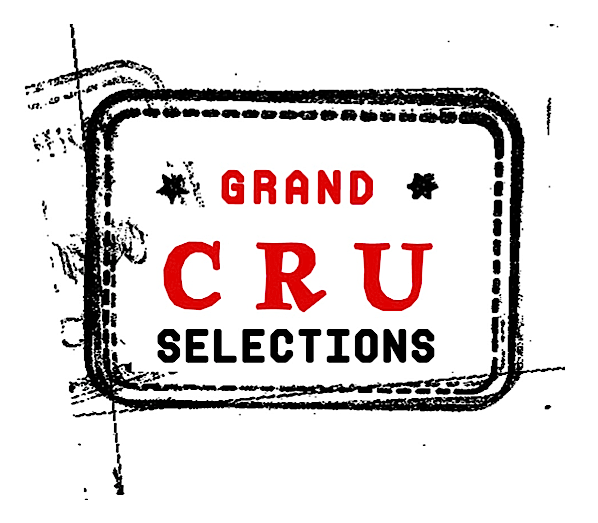Domaine Comtes Lafon Current Releases
Monthelie Blanc
A tiny 0.15 hectare parcel, the Monthelie Blanc was planted in 1996 just above the Monthelie-les-Duresses. Due to the severe (28%) slope, the vineyard is worked by horse and by hand. At first, the wine was only consumed at the domaine during harvest but it is now released in tiny quantities.
Meursault
A blend of three parcels:
En La Barre
0.61 hectares planted in 1953 and 1956 next to Clos de la Barre
Produces richer wines
En Luraule
0.45 hectares planted in 1975, purchased by the domaine in 1996
Located next to Goutte d'Or
Produces very little wine but of extreme minerality and tension
Biodynamic farming has done wonders in rehabilitating the vineyard health
Les Crotots
0.17 hectares acquired in 2004, started to go into the Meursault cuvée in 2009 upon the expiration of its preexisting lease to another winemaker
Meursault "Clos de la Barre"
2.12 hectares owned entirely by the domaine, encircled by a wall
Shallow clay soil above hard limestone
Planting dates - 1950 (0.80 ha), 1975 (0.80 ha), 1999 & 2004 (0.50 ha)
The terroir produces rich, mineral wines, with pronounced citrus aromas and marked acidity.
Meursault Clos de la Baronne
The '12 was the first vintage that the Clos de la Baronne had been bottled as a single parcel. The bottling is sourced from the 2.7ha Clos de la Baronne, a monopole of on average 40-year-old vines.
Meursault “Désirée”
0.45 hectares in the lieu-dit of “les Petures”
The name “Désirée” was used at the end of the 19th century; this precedent allows Lafon to use it, as he finds “Désirée” to be more attractive than “Petures”.
The vines are planted on thin red clay that is quite suited to Pinot, so most of the lieu-dit is planted as such and is bottled as Volnay-Santenots
Due to the unusual terroir for Chardonnay, this wine is always rich, somewhat exotic, and seductive in its youth.
Meursault 1er Cru Goutte d'Or
0.39 hectares replanted in 1991
Clay-rich soil on pebbly limestone sub-soil
Vigorous terroir that must be well-managed
Produces very powerful wines with ripe aromas and explosive minerality
Meursault 1er Cru Charmes
1.71 hectares in Charmes du Dessus (the top - and best part - of the vineyard)
3 planting dates:
1946 by Auguste Morey (Pierre's father)
1963 by Pierre Morey
1996 by Dominique Lafon
Relatively deep clay-limestone soil, the rocks are quite crumbly, even at great depth
Produces powerful but not heavy wines
Meursault 1er Cru Genevrières
0.55 hectares in Genevrières du Dessus (the top - and best part - of the vineyard)
2 planting dates:
1946 (2/3 of the vines)
1993 (1/3 of the vines)
The parcel is located right next to Lafon's parcel of Perrières
The soil is shallow and very light, producing a wine of incredible finesse
Meursault 1er Cru Porusots
The 1er Cru Porusots is an east-facing vineyard with deep clay soils. The site produces lavish, layered and deeply structured wines.
Meursault 1er Cru Perrières
0.91 hectares in 2 parcels:
Les Perrières Dessous
0.77 ha towards the bottom of Perrières
Planted in 1955 (87%) and 1983 (13%)
Les Perrières Dessous “Perrières Ginette”
0.14 ha towards the bottom of Perrières
Acquired in 2004
The soil is quite fine and is white from the abundance of limestone and marl on a sub-soil of flaked limestone
This is always a powerful wine, marked with Perrière's signature potent minerality
Montrachet Grand Cru
0.32 hectares at the extreme southern end of the vineyard, just south of Romanée-Conti's plots
80% planted in 1953, 20% in 1972
Purchased by Comte Jules Lafon in 1918, this small piece of Montrachet is the crown jewel of the estate, producing tiny amounts of a wine of astounding richness, balance, and depth.
Monthelie Rouge 1er Cru "Les Duresses"
1.06 hectares on the hill just behind the village
1/3 planted in 1975, 2/3 planted in 1986 and 1996
The soil is red and stony at the bottom of the hill and turns whiter at higher elevations
Volnay-Clos des Chenes
0.38 hectares planted in 1973 towards the bottom of the Clos, overlooking Caillerets
Clay-rich soil of medium depth on top of soft limestone sub-soil.
Volnay-Champans
0.52 hectares, 2/3 planted in 1922 (the oldest vines of the domaine, from which they often harvest cuttings) and 1/3 planted in 1989
Light soils with small stones, on crushed limestone
Produces relatively dense wines that are less tannic than Santenots
Volnay-Santenots du Milieu
3.78 hectares in multiple parcels purchased by Jules Lafon, Dominique's great grandfather and the founder of the domaine
Plantings in 1944, 1962, 1965, 1978, 1996, and 2002
The soils are very rich in clay, yet shallow, on hard limestone bedrock.
The wines are dark in color, rich, and deep, with noticeable tannins but always elegant.
